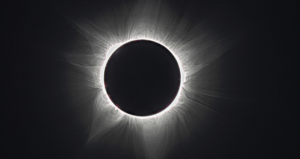On Monday, April 8th, a large part of North and Central America will have the opportunity to witness the Moon passing in front of the Sun and covering it during a total solar eclipse.
The total eclipse will be visible to millions of people in areas of North America, Mexico, and Canada. It will begin from the southern Pacific Ocean, with the first areas of Mexico observing it from the Pacific coast. The path of the eclipse will cross Mexico and continue into the USA, passing through Texas, continuing northeast, and then crossing into Canada.
During totality, when the Moon’s black disk takes the place of the Sun, the sky will darken as if it were dawn or dusk, and spectators (with protective glasses) will have the opportunity to observe the Sun’s corona, the outer atmosphere of the Sun. This phase can last up to four minutes. Outside the path of totality, people in neighboring areas will have the opportunity to see a partial solar eclipse.
Live coverage of the eclipse by NASA
According to NASA, approximately 31.5 million people live along the path of the eclipse, while overall, over 300 million individuals will have the opportunity to experience at least a partial eclipse. NASA has scheduled live coverage of the eclipse starting at 8 p.m. Greek time and for three hours from locations across the USA.
Groups of professional and amateur astronomers, astrophotographers, and eclipse chasers from all over Greece are preparing to travel, some to the USA and some to Mexico, to observe and study the impressive astronomical phenomenon.
Ask me anything
Explore related questions





